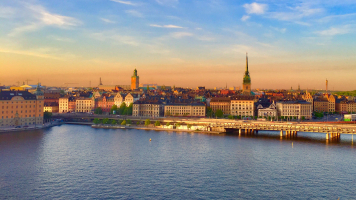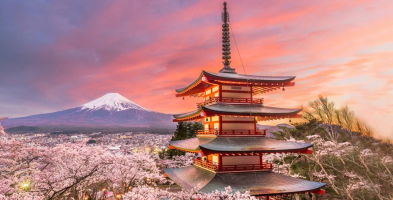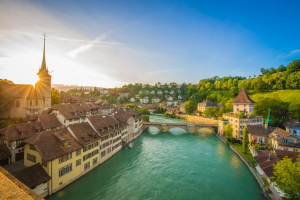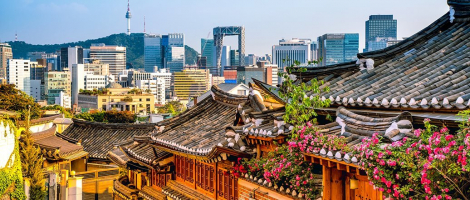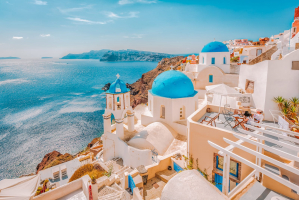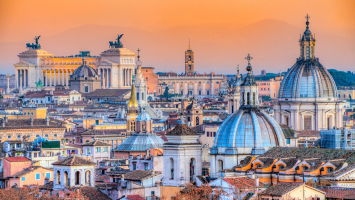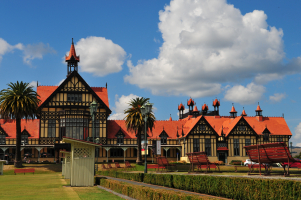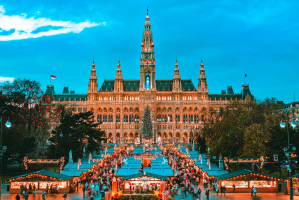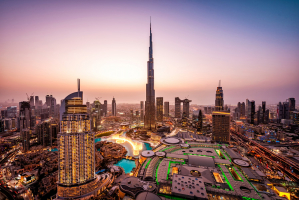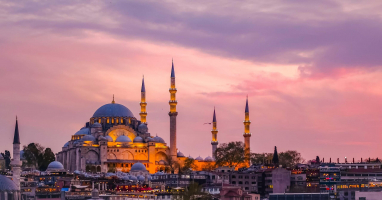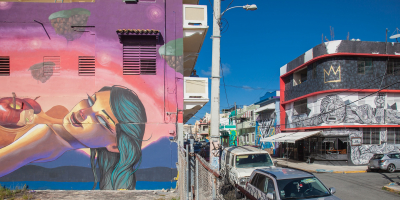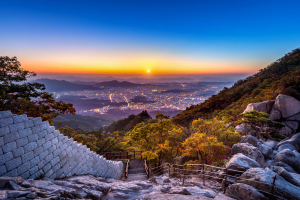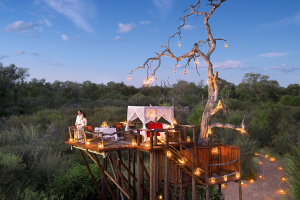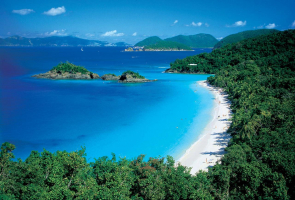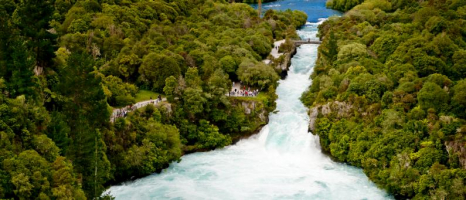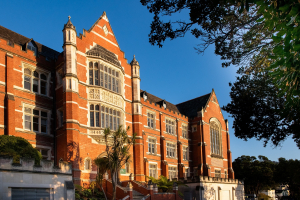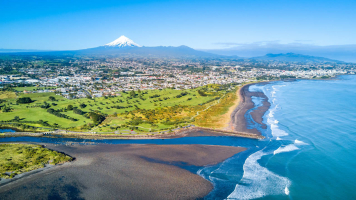Top 10 Must Visit Places In New Zealand
New Zealand, the country of kiwi, is peaceful and gentle with its rich and varied nature and environment, beautiful lakes, tranquil mountains, and magnific ski ... read more...areas. New Zealand is a great tourist destination, a place of great inspiration for many tourists in the world. Let's explore with Toplist 10 beautiful destinations that can't be missed when traveling in New Zealand right now!
-
Bay Of Islands is a subtropical region consisting of 144 large and small islands, tranquility bays, white sand beaches with wonderful towns such as Paihia, Russell, Opua, Kerikeri, Kawakawa, etc. The warm climate, beautiful nature, and historical landmarks make this place become one of New Zealand's top tourist destinations.
Paihia is considered the heart of the Bay Of Islands. The town of Paihia is the center of the Bay Of Islands. This place is the Waitangi Treaty House, a house with unique architecture, with two contrasting red and white colors, imbued with Maori culture. Opposite the Waitangi Treaty House is a meeting house built in Maori architecture, inside displaying wooden statues with many intricate carvings. These two houses are symbols of the partnership agreement between the Maori and the British Royal Family.
Just a short boat ride, you will reach the city of Russell. Russell was formerly the capital of New Zealand. This land has witnessed many wars in history. Today, it is one of the most beautiful, peaceful cities of the Bay Of Islands. In addition, when coming here, visitors will feel the affection and hospitality of the residents of the Bay Of Islands. Whether in Paihia, Russell, Kawakawa, or Opua, wherever you go, you will be warmly welcomed by the Maori Aboriginal people to visit your home, offer you specialties, and pour you full glasses of wine.
Location: Northland
Best time to visit: February – March
Stay options near Bay of Islands: Paradise on the Strand, Sea Spray Suites, Veronica House, and Arcadia Lodge
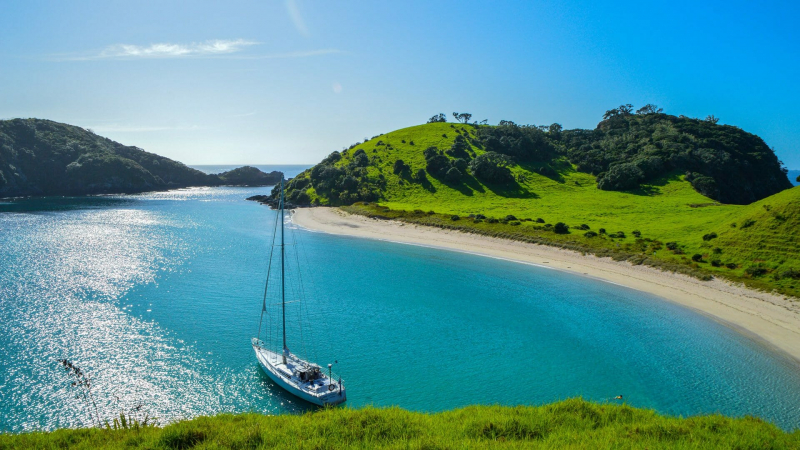
Bay Of Islands. Photo: traveladvo.com 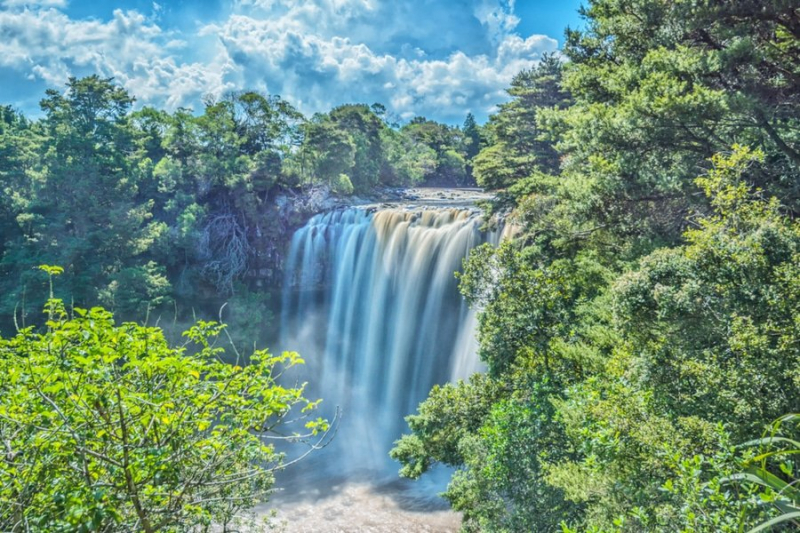
Bay Of Islands. Photo: wherewouldyougo.com -
Tongariro National Park was established in 1887 and was New Zealand's first national park. With an area of nearly 80 hectares, Tongariro has an ecological system of rivers, mountains, and dense forests typical of Australia. Tongariro National Park locates in the center of the North Island of New Zealand. With the majestic beauty of nature, the diversity of ecosystems, and intangible cultural values, this place has been recognized by UNESCO as a world natural heritage in the mixed list.
Tongariro National Park includes three volcanoes: Tongariro, Ngauruhoe, and Ruapehu. The Tongariro massif is long 18km. Coming to Tongariro park, you will be able to walk on the cliffs trails, set foot on Mount Ruapehu appeared in the movie Lord of the Rings, to feel the natural beauty from the film to real life. The Tongariro Aps Trail will give you excellent experiences with barren mountains, volcanic craters, lava flows, and colorful lakes. You can visit the 1923 snow hut, now a ski museum, or visit the Georgian-style Tongariro castle. In addition, if you are adventurous, you can experience water activities such as kayaking along the Whakapapa River or canoeing through the Whanganui River waterfall.
Location: Manawatu-Wanganui 4691, New Zealand
Best time to visit: December – February
Stay options: Adventure Lodge and Motel, Chateau Tongariro Hotel, Pipers Lodge, and National Park Tavern
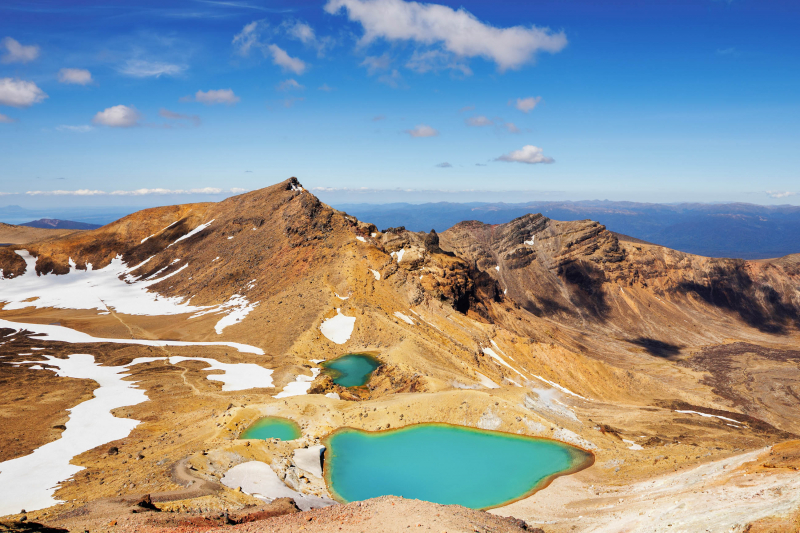
Tongariro National Park. Photo: franks-travelbox.com 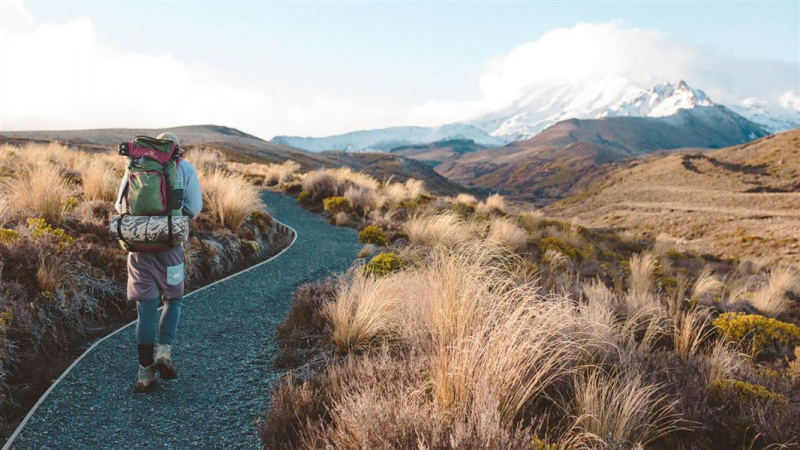
Tongariro National Park. Photo: doc.govt.nz -
Rotorua in Maori means the second largest lake of Kahumatamoe, which is a city located on the southern coast of the lake of the same name in the North Island of New Zealand. Rotorua is famous for its geysers, especially Geyser Pohutu in Whakarewarewa. There are five main geothermal areas, including a sequence of geysers, hot springs, boiling mud pools, and hissing craters.
Rotorua is New Zealand's natural energy hub. Nature endows this land of the Volcanic Plateau on the Pacific Rim region with great beauty and value. Lichens, mosses, and salt structures mixed with natural green, crystal blue of the lake, or earth tones have created beautiful pictures. The peculiar shapes formed from the volcanic geological layer are carved with terraces, valleys, lakes creating spectacular scenes. The city of Rotorua is also known as the metropolis of sulfur because of its hydrogen sulfide emissions. The Middle Eastern Te Ngae region has a distinctive pungent odor due to its dense sulfur content, which lies next to the southern boundary of New Zealand's National Park named Sulfur Point. Hell's Gate is the most geothermally active park in Rotorua, with temperatures up to 93 degrees Celsius. Tikitere or Hell's Gate was once a sacred place for the Ngati Rangiteaorere tribe, and today is a hot spring park owned by the Maori. It is a valuable healing and regenerating point.
Rotorua is the ancestral home of the Te Arawa people who settled here 600 years ago. It is also the soul and cultural heritage of the Maori people in individual and human civilization in general.
Location: North Island
Best time to visit: November – April
Stay options: Millenium Hotel, Arista of Rotorua, Rydges Hotel, and Quest Hotel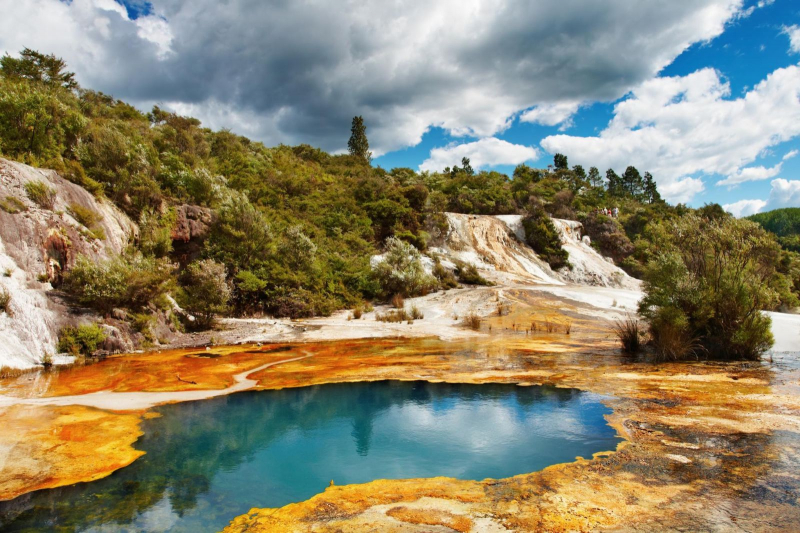
Rotorua. Photo: phuotlendinh.com 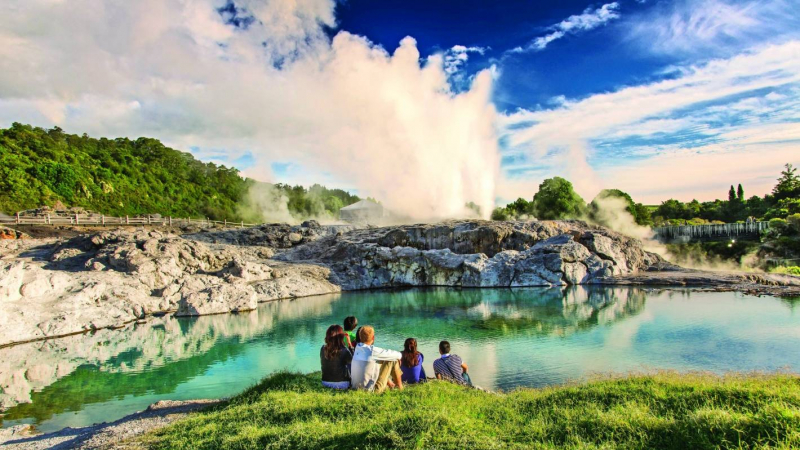
Rotorua. Photo: stuff.co.nz -
The port city of Napier in the Hawke's Bay region is a popular vacation destination for tourists and locals alike. With sweeping views of Hawkes Bay, a warm climate, vineyards, orchards, and art deco buildings, this city is an exciting destination in New Zealand.
Napier is not only the largest city in sunny Hawke Bay, but it is also the most quirky with its Art Deco charm. Art Deco is a style taken from the 1920s. Geometric motifs and symbols of freedom were chosen to decorate the city after a devastating earthquake destroyed it. It has a Mediterranean-style climate with more than 2,200 hours of sunshine per year. It is sure to be an unforgettable travel experience.
Hawke's Bay is one of New Zealand's most important wine regions. The warm and dry climate supports the renowned wine industry. Vineyard tours and wine tastings are popular, while some wineries also have excellent restaurants. Orchards such as apples, pears are grown a lot and exported throughout New Zealand and the world.
Location: Hawke’s Bay
Best time to visit: July – August
Stay options: The Country Hotel Napier, The Crown Hotel Napier, Art Deco Masonic Hotel, and Scenic Hotel Te Pania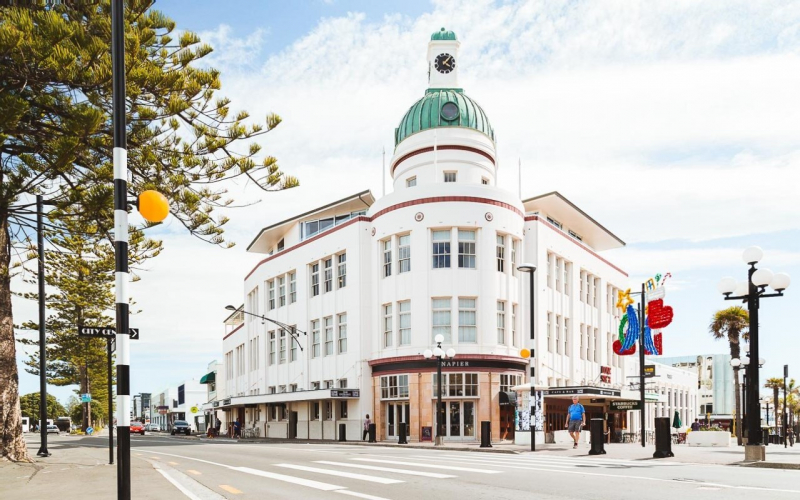
Napier In Hawke’s Bay. Photo: laidbacktrip.com 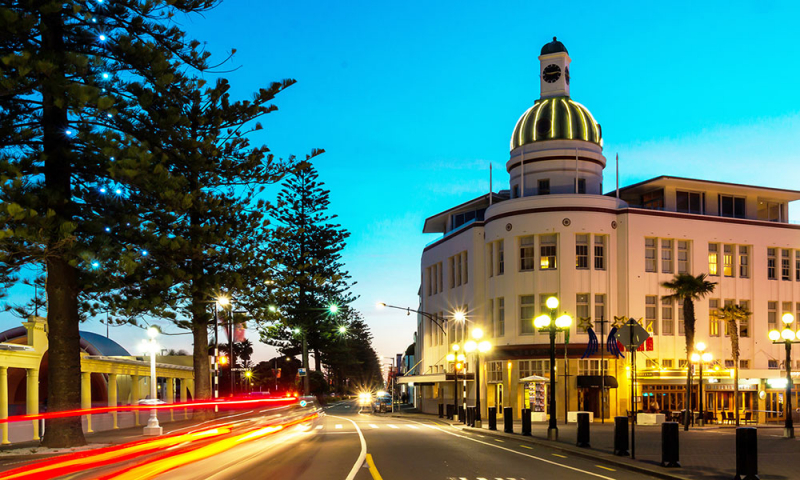
Napier In Hawke’s Bay. Photo: restaurantandcafe.co.nz -
Auckland in New Zealand has risen to the top of the world's most liveable cities for 2021. Auckland is surrounded by impassive subtropical islands with sparkling waters and lush, natural forests. Located in the southwestern Pacific Ocean, Auckland is known as New Zealand's most populous and culturally diverse city, bringing both the modern look of European architecture and the wild and classic features of hills, jungles, and beaches big and small. Auckland is blessed with forests, immense ancient beaches, snow-white peaks, particularly fascinating Maori culture, etc. These things have turned this place into a worthy destination dream for those who love to travel. With countless luxury yachts in the harbor, you'll understand why Auckland is also known as the City of Sails.
Located on the north coast of the Auckland region, Bethells Beach is suitable for surfing, fishing, bushwalking, skateboarding, and swimming. In the east of the city, there is a Muriwai beach, with strange black sand color that attracts visitors. Here, the sky and sea are always blue, wave rolling along with the waves hitting the shore creates an absorbing space. Auckland is truly a "two in one" city: a bustling modern metropolis but equally poetic and romantic.
Location: Auckland
Best time to visit: June – September
Stay options: Skycity Grand, Off Broadway Motel, Warkworth Lodge, and Parklane Motor Lodge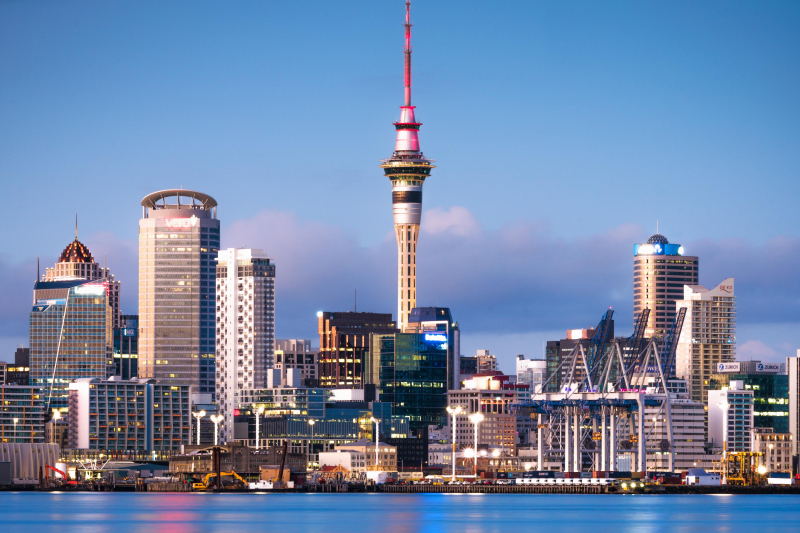
Auckland. Photo: thetimes.co.uk 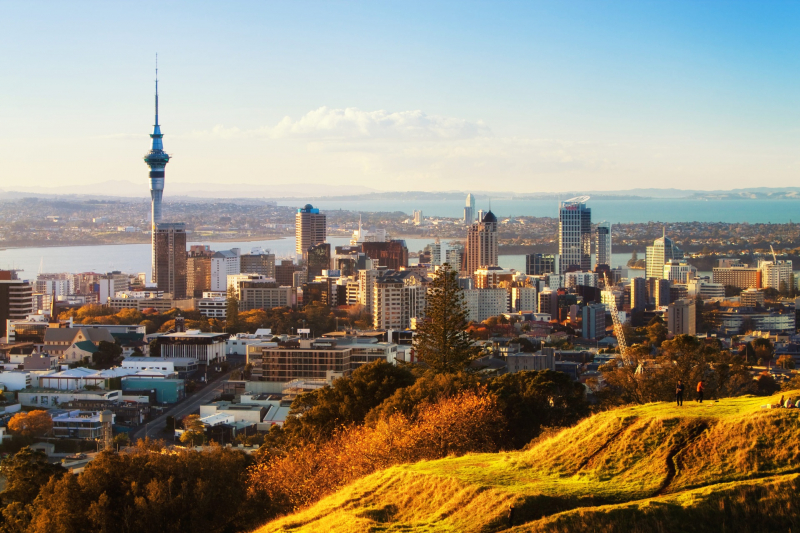
Auckland. Photo: ashui.com -
The Coromandel Peninsula is on New Zealand's North Island, extending 85 kilometers north from the west of the Bay of Plenty, forming a natural barrier that protects the Hauraki and Firth bays. Almost the entire population lives on the narrow coastal strip in front of Hauraki Bay and Plenty Bay. When the weather is nice, Auckland, the country's largest city, can be seen from the peninsula. Surrounded by Pohutukawa trees, beautiful white sand beaches, and shrouded in dense rainforest, the 400 kilometers of Coromandel coastline offers visitors a memorable experience.
Located on the Coromandel Peninsula, Hot Water Beach is a famous and one of the first destinations visitors will visit while on vacation in New Zealand. The miracle is that geothermal sources of volcanic origin located 15m below the sandbank will rise with each high and low tide. Taking advantage of this fascinating feature of nature, tourists coming here often dig for themselves sand pits on the beach so they can lie down and relax in the warm water. The deeper the hole, the higher the water temperature. The highest temperature of these natural hot tubs is around 50-60 degrees Celsius.
In addition, Mercury Bay on the East Coast of the Peninsula possesses a spectacular coastline surrounded by islands. The area has white sandy beaches, crystal clear streams, and deep blue mountains. Many impressive landscapes here are waiting for you.
Location: Kaimarama 3591, New Zealand
Best time to visit: September – November
Stay options: Anchor Lodge Coromandel, Aotearoa Lodge, Beachfront Resort, and Beachside Resort Whitianga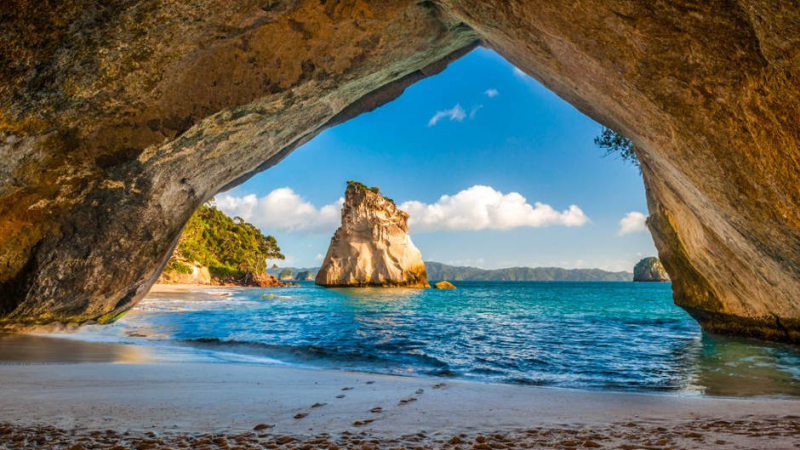
Coromandel Peninsula. Photo: bookme.co.nz 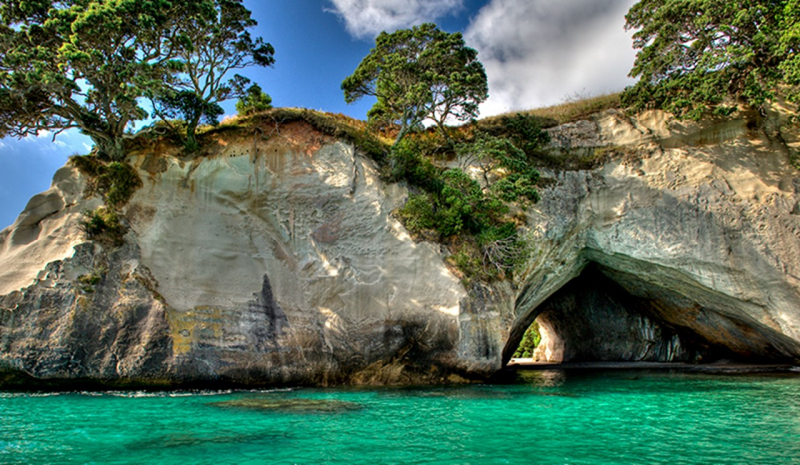
Coromandel Peninsula. Photo: fullers.co.nz -
The Lake Wakatipu region was formed thousands of years ago when water-filled a glacial trench in the southeast of the Southern Alps. The grasslands and forest slopes stretch from the water to the foot of the surrounding mountains. The scenery here is as beautiful as the famous glacial lakes in the Alps in Switzerland, Liechtenstein, or Austria. On a bend in this lake of lightning, the town of Queenstown was founded by gold diggers in the region's most beautiful pine forest - now a Ben Lomond landscape reserve. They love the charming countryside, so they named this place is Queenstown with the implication that the town is worthy of the beautiful Queen Victoria.
Interspersed between the pine trees are simple dark gray roofs, giving way to the blooming nature. When winter comes, the town is magnificent, snow covering the peaks and pine forests. When spring comes, the cherry blossoms are brilliant. Or when summer comes, the water is so blue. Then autumn to the woodland to change the leaves of the yellow layer and red layer.
In winter, the snowy valleys around Queenstown are the place to host fun activities such as skiing, snowshoeing that make tropical tourists feel strange and excited. Spring and summer, this place is bustling with water sports such as surfing, paragliding.
Location: South Island, New Zealand
Best time to visit: June – August
Stay options: The Rees Hotel & Luxury Apartments, Heritage Queenstown, Coronation Lodge, and Adventure Queenstown Hostel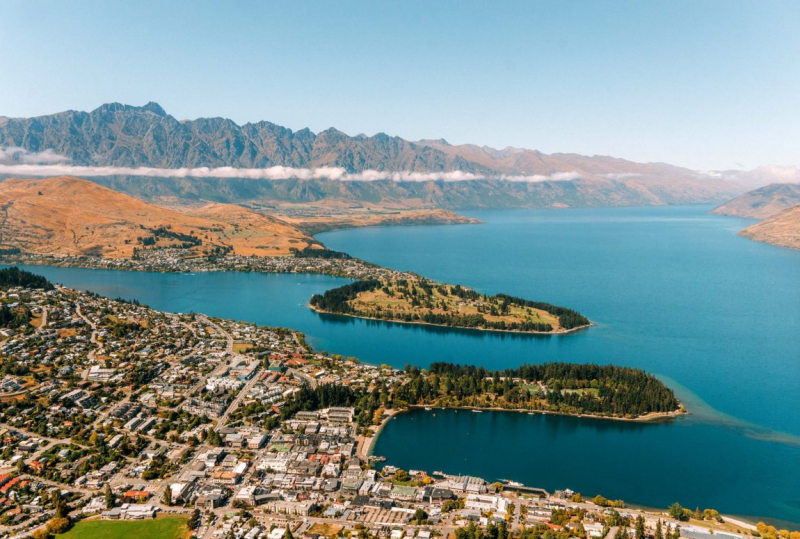
Queenstown. Photo: cktravels.com 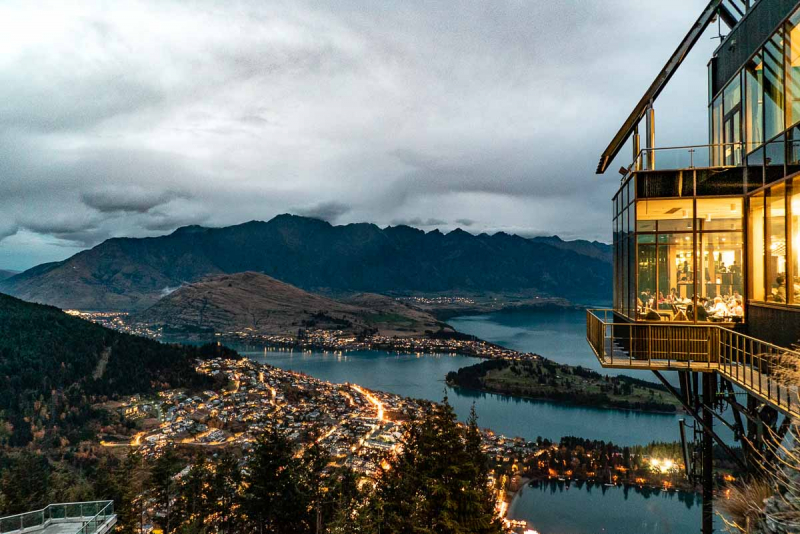
Queenstown. Photo: thetravelintern.com -
Fiordland is New Zealand's largest national park. The beauty of this national park is the majesty of nature, including bays, valleys, glacial lakes, and waterfalls. It has made Fiordland a prevalent New Zealand tourist destination that many tourists want to visit.
Fiordland's grandeur comes partly from the fjords. These fourteen bays were formed 100,000 years ago, with the last details added during an ice age 10,000 years ago. On all sides of Fiordland, spectacular waterfalls tumble down endlessly. Milford Sound is a fjord in Fiordland National Park, described by Rudyard Kipling as the Eighth Wonder of the World. Milford Sound is full of amazing sights. Every day, flights and yachts still regularly bring visitors to see the full beauty of this place.
Coming to Fiordland National Park, visitors will experience many activities such as kayaking or diving in the calm and blue clear waters. Visitors can also paddle along Lake Te Anau to watch the fresh nature and relax by fishing. Fiordland National Park is New Zealand's largest national park, so it's no wonder it is home to wildlife such as seals, Kakapo, or diverse vegetation. If you're a nature lover, you can hike through snow-capped peaks, cascades, and mossy forests. Note that it is necessary to equip the protection and reserve the items to ensure safety during the trip.
Location: 116 Little Park Lane, Te Anau 9600, New Zealand
Best time to visit: Throughout the year
Stay options: Fiordland National Park Lodge, Aden Motel, Distinction Luxmore Hotel Te Anau, and Mintaro Hut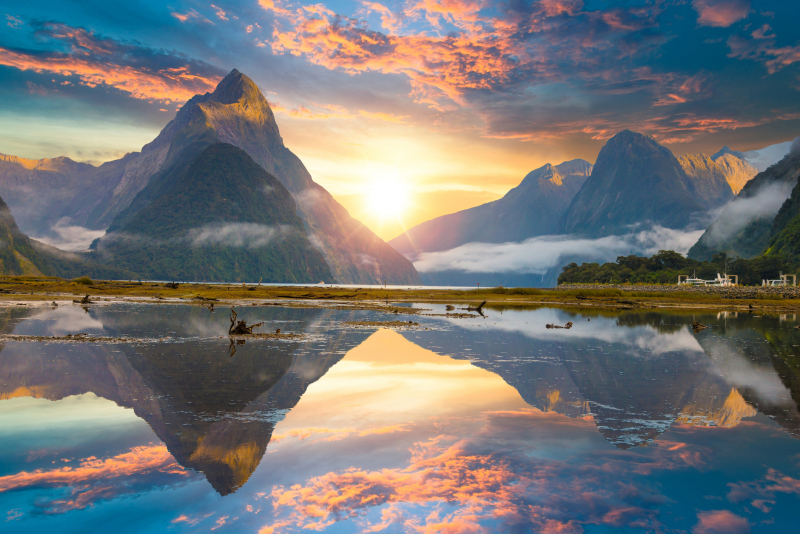
Fiordland National Park. Photo: international-adviser.com 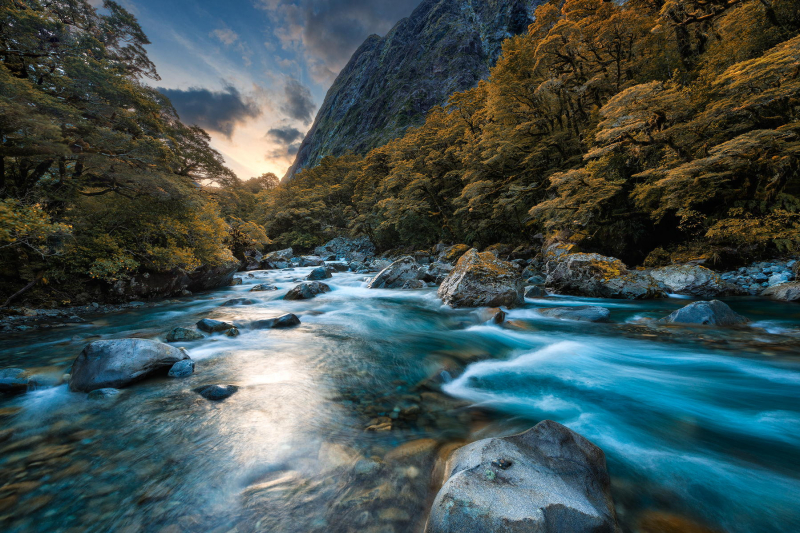
Fiordland National Park. Photo: thousandwonders.net -
The Fox and Franz Josef Glaciers are popular tourist destinations in New Zealand. These two rivers are located in the Westland Tai Poutini National Park in the southern peninsula of New Zealand. The Fox Glacier River is long 13km, while Franz Josef is 12km. These two rivers are 20km apart, but they both flow from the Southern Alps at an altitude of 300m to a lush and green tropical forest.
Fox Glacier possesses a breathtaking landscape of high mountains on the west coast of the South Island. Fox Glacier is the name of both the glacier and the small nearby resort town. Despite its remote, Fox Glacier remains one of the most accessible glaciers in the world, next to the nearby Franz Josef Glacier, as it is close to the resort town and has ways convenient. A few miles west of town, you'll come to a beautiful natural landmark, the Fox Glacier. With a length of 13 km, the Fox Glacier descends at 2,600m from the Southern Alps, with its endpoint in the middle of dense forest. The ever-changing mounds of ice are a one-of-a-kind landscape. From this endpoint, large chunks of ice can fall at any time without warning, mixing with ice falls from the mountain.
Franz Josef Glacier - Emperor Franz Joseph I of Austria, stretching down to the dense rain forest. Here, you will admire the meandering glaciers, caves, and melting ice flows down the river, explore the mysterious ice caves below the glacier. Immerse yourself in the beauty of the surrounding temperate rainforest and white ice fields. It is sure to be the most memorable experience in New Zealand. In addition, the Glacier heated swimming pool is a place to relax and experience the ultimate relaxation. Located in the temperate rainforest at the end of the Franz Josef Glacier, the Thermal Pool, with its sapphire blue water flowing straight from the glacier, creates a beautiful space to relax and mingle with nature.
Location: West Coast 7886, New Zealand
Best time to visit: June – August
Stay options: Aspen Court Franz Josef, YHA Franz Josef Glacier, Alpine Glacier Motel, and Franz Josef Oasis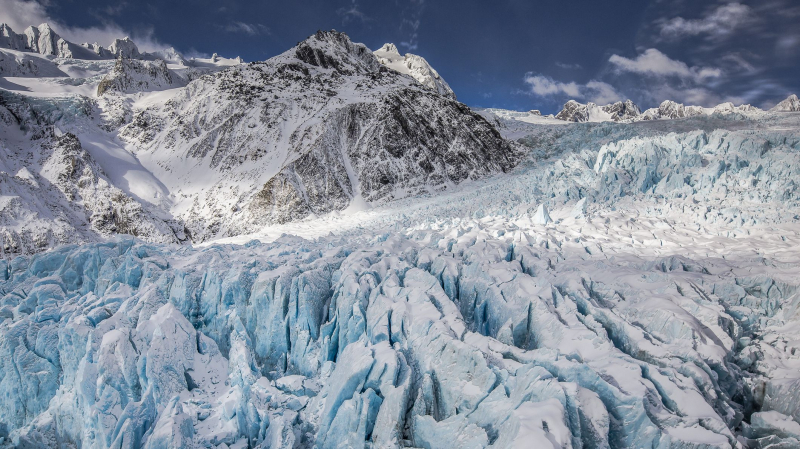
Fox And Franz Josef Glaciers. Photo: tripsavvy.com 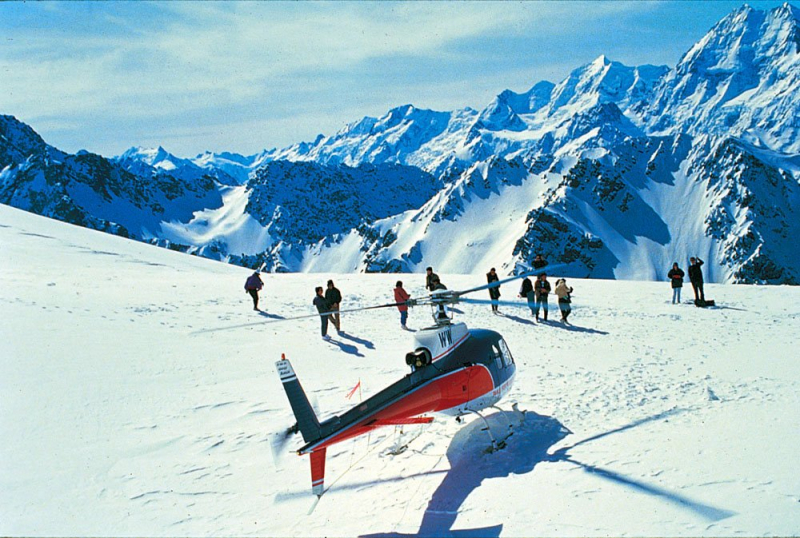
Fox And Franz Josef Glaciers. Photo: blog.goway.com -
Abel Tasman National Park encompasses one of New Zealand's most unspoiled coastal stretches, making it feel like a true tropical oasis! Located at the tip of New Zealand's southern island, the beaches of Abel Tasman National Park can only be reached by foot or by boat. It will take you about 3-5 days to complete the Abel Tasman coastal trail and longer if you stop to enjoy each of the beautiful coves!
Here, sandy beaches fill the gaps between the trees and the tidal currents. Crystal clear streams flow down the valley to merge with the ocean. Granite and marble formations surround the headlands, blanketed in regenerating native forest. At Te Pukatea Bay, a perfect crescent of golden sand, a walking path leads up Pitt Head to an ancient Maori pa site. Moreover, if you look down at the water at night, you can notice a remarkable natural phenomenon: plankton that glows in the dark. It is a unique New Zealand experience you won't forget.
Abel Tasman National Park is home to dense regenerating native forests. Hike the tracks from the Golden Bay side of the national park to see the deepest vertical shaft in New Zealand. Harwood's Hole is New Zealand's deepest natural vertical shaft. It was formed by the weathering and erosion of the marble, subsequently changing the flow. There are also stunning Wainui Falls or the rugged Inland Trail in Abel Tasman National Park.
Location: South Island 7183, New Zealand
Best time to visit: Throughout the year
Stay options: Kimi Ora Eco Resort, Kaiteri Lodge, Abel Tasman Lodge, and Riwaka Retreat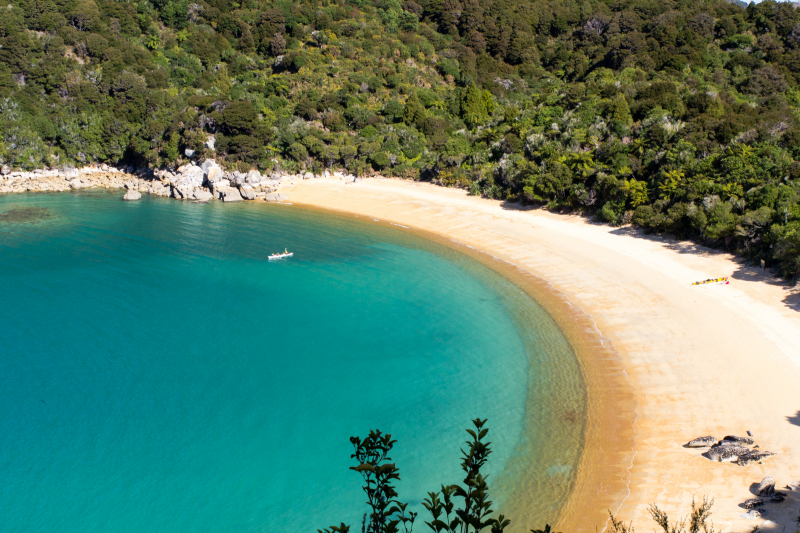
Abel Tasman National Park. Photo: de.wikivoyage.org 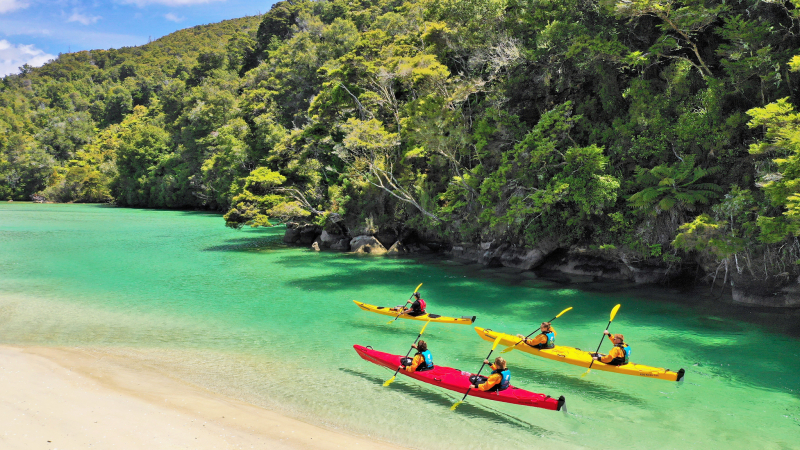
Abel Tasman National Park. Photo: abeltasman.co.nz












